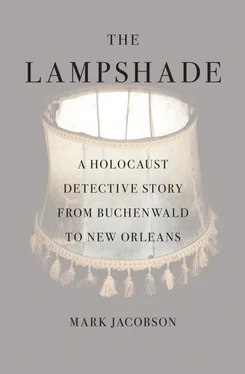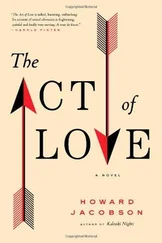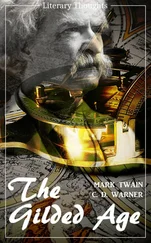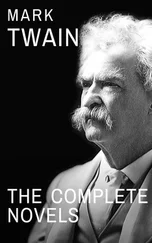Were all these statements simply based on misidentification, propaganda, the effect of the shock of seeing what had happened at the camp, or a bout of collective hysteria?
“They won’t take it,” I told Skip Henderson, after my conversation with Diane Saltzman.
“Why not? Didn’t you show them the DNA?”
“Of course I did. They don’t think it is part of the Holocaust.”
“What’s that supposed to mean? Can’t you call them back? I got to get this thing out of my life.”
My conversation with Diane Saltzman continued to bug me. There were so many issues to discuss that I never got to. It went back to the DNA test, what could be found and what could not. This was a matter of “markers,” as Bob Bever, the Bode lab vice president explained to me. The degraded lampshade samples yielded only so many genetic markers. There was enough information to certify the skin as human but not enough to determine what kind of human. The full genetic record, including the “ethnicity” of the poor soul who’d been turned into a lampshade, was not obtainable.
I called Bob Bever for some clarification. “You’re telling me that there’s not enough DNA to give a hint of who the person is? That it could as easily be some poor hitchhiker from Arkansas as a concentration camp victim?”
Bever was typically noncommittal. “We’re bound by the results we get. So yes. As of now there’s no way of telling the ethnicity of the lampshade material.”
“So it could be anyone ?”
“As far as these results indicate, the answer to that would be yes.”
Asked what I should do next, Bever said, “Well, you can always keep on testing.”
Yeah, sure. But would it be worth it? This stuff was hellaciously expensive. What were the real chances of a more complete finding? If our roles were reversed, what would he do?
“Don’t ask me to advise you not to test,” Bever said. “That wouldn’t be good for business.”
“Come on.”
Bever took a breath. “If it were me I wouldn’t do it. We worked a long time to squeeze out that little drop of DNA. What you have may be all you’re going to get.”
“That’s it?”
“You never say never. But it is highly unlikely.”
This was disappointing news, but the inconclusiveness did place the lampshade in a unique, and possibly illuminating, existential position. Here was an example of an object that, whatever Diane Saltzman said about it, had served as a most repellent symbol of Nazi racial terror, an icon of genocide. Yet it was not possible to know who had died and who had done the killing. Museums judge reality by provenance and dating. But beyond its apparent European origin and turning up in New Orleans after Katrina, the lampshade had no fixed provenance. Beyond its clear modernity, it came from no set time. The skin on the shade could have been made of anyone, come from anyplace.
The lampshade was an everyman, an every victim.
It is one of the oldest of Jewish philosophical arguments, the ongoing dialectic between “particularism” and “universalism”: do Jews have a unique existence and relationship with God, or is the true mission of a Jew to live in “the world” like everyone else? This is, above all, a discussion about the concept of “the chosen people.” Does the “chosenness” of the Jews, granted by the acceptance of God’s Torah, entail an apartness, an eternal special-case condition? Or does it confer, as many liberal, cosmopolitan Jews believe, a unique obligation to reach out and fit in, to offer the not inconsiderable genius of the Jewish people to the larger society? With the Holocaust, the particular/universal dichotomy has been taken further, morphing into an overall theory of genocide itself. The main question from the Jewish perspective is whether the Holocaust was a wholly unique, distinct occurrence in the history of the world, or was it part of the larger circumstance of human nature? Put another way, did those people whose pictures I saw pasted to the walls at Tuol Sleng, or an Armenian killed by a Turk, or a Tutsi hacheted by a Hutu have anything in common with a Jew murdered at Auschwitz? Or is every instance of collective death a separate case, with its own particularized circumstances, disconnected from the general trend of mass slaughter?
It was a dilemma. You had commentary from people like Anti-Defamation League president Abraham Foxman, that old reliable font of Hebraic exceptionalism, who in a 1994 edition of the ADL’s Frontline publication said, “The Holocaust is something different. It is a singular event. It is not simply one example of genocide but a nearly successful attempt on the life of God’s chosen children and thus on God himself.”
This provincialism aside, there was a compelling truth to the particularist position. Obviously the Nazis, the perpetrators, believed in the singularity of the Jews. Particularism was practical; it defined who was us and who was them; it circled the wagons; it was a way to survive. Universalism, on the other hand, was for simps. Universalism asked you to imagine yourself having as much in common with some Cambodian left facedown in a ditch as you did with your murdered uncle Max. It was a hard argument to swallow. Yet, being the sort of New York Jew I am, from the leafy workers’ paradise of Flushing, Queens, I couldn’t quite buy into being a particular kind of anyone. It wasn’t the way I was brought up.
Perhaps it was a kind of romanticism, but I took the lampshade out of its Sugar Ray Robinson box that night, looked it over. Doña Argentina, the Union City spiritualist, had said it— he —wanted to stay with me. That he trusted me. It sounded insane then and it sounded insane now. But I had hopes, inchoate as they might be, that this purported symbol of racist lunacy, product of the worst humanity could conjure, might through its everyman DNA somehow stand as a tortured symbol of commonality.
It was just a thought.
Ken Kipperman, the world’s best-known lampshade hunter, doesn’t think much about concepts like particularism and universality.
“With my skills, I am not really much of a philosophy student, I’m afraid,” he says in his self-effacing, preternaturally polite way. “It is easier for me to focus on one thing at a time.”
He is a tall, youthful-seeming man in his early sixties, his longish salt-and-pepper hair combed in a semi-bouffant swoop. In the basement of his comfortable Maryland home, where he keeps two decades of research in neat piles on the pool table, Kipperman told me about the first time he became aware of the lampshade.
“I was about eight, after our family came to America,” Kipperman said in the halting, almost disembodied inflection he falls into while reciting the events of his past. “We were living in Coney Island, in a neighborhood with a lot of war refugees like us, and I heard this angry, angry man on the television screaming in a language I didn’t understand. I went to see what it was and I saw my mother and father spitting. They were spitting right at the TV screen! It made me afraid because I’d never seen them so upset. Later I found out it was Hitler on the television. But my parents never told me that. They wouldn’t even speak his name.
“That’s when I saw the Buchenwald Table for the first time. Of course I didn’t know what it was. I didn’t know anything. My parents didn’t tell me about the Holocaust, any of it. But I knew there was something terrible on that TV screen. I asked, ‘What is that?’ but my mother told me that wasn’t for me to know. That was how it always was: everything was a big secret.
“That was the first time I really ever thought about it, who I was and where I came from,” said Kipperman, who was born in Poland in 1946 and spent his earliest years in a displaced persons’ camp in Italy. “When you’re a kid, you want to be like everyone else. But when I saw the Table, that was when I began to realize I wasn’t. I didn’t remember it at the time, the lampshade and tattooed skin, but it stayed with me, in the back of my mind.”
Читать дальше












